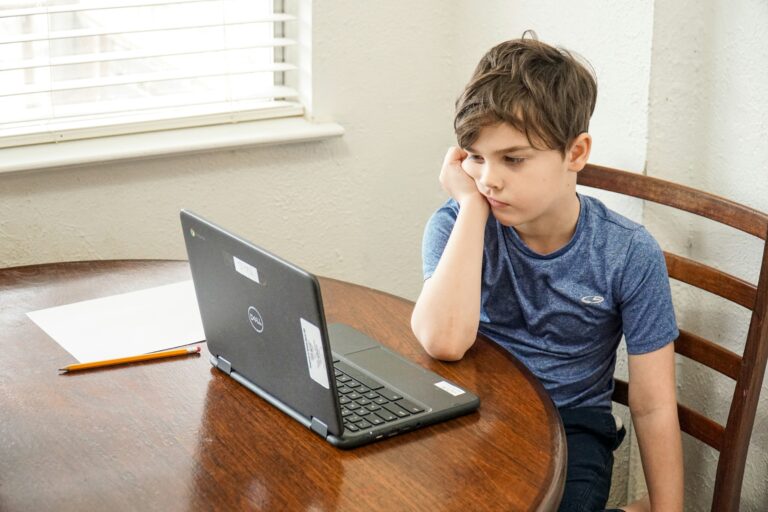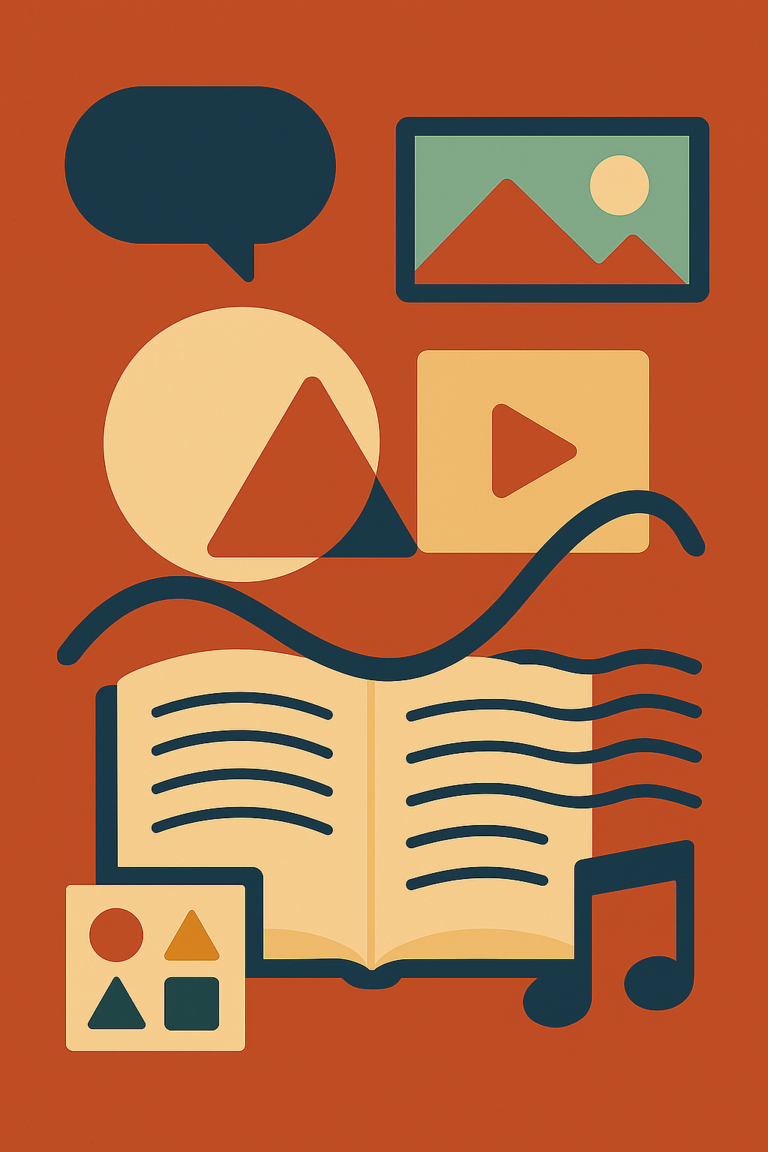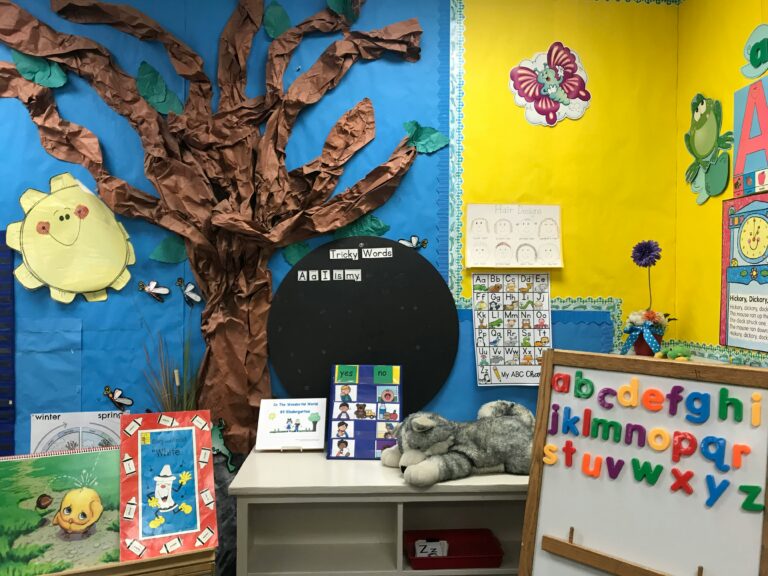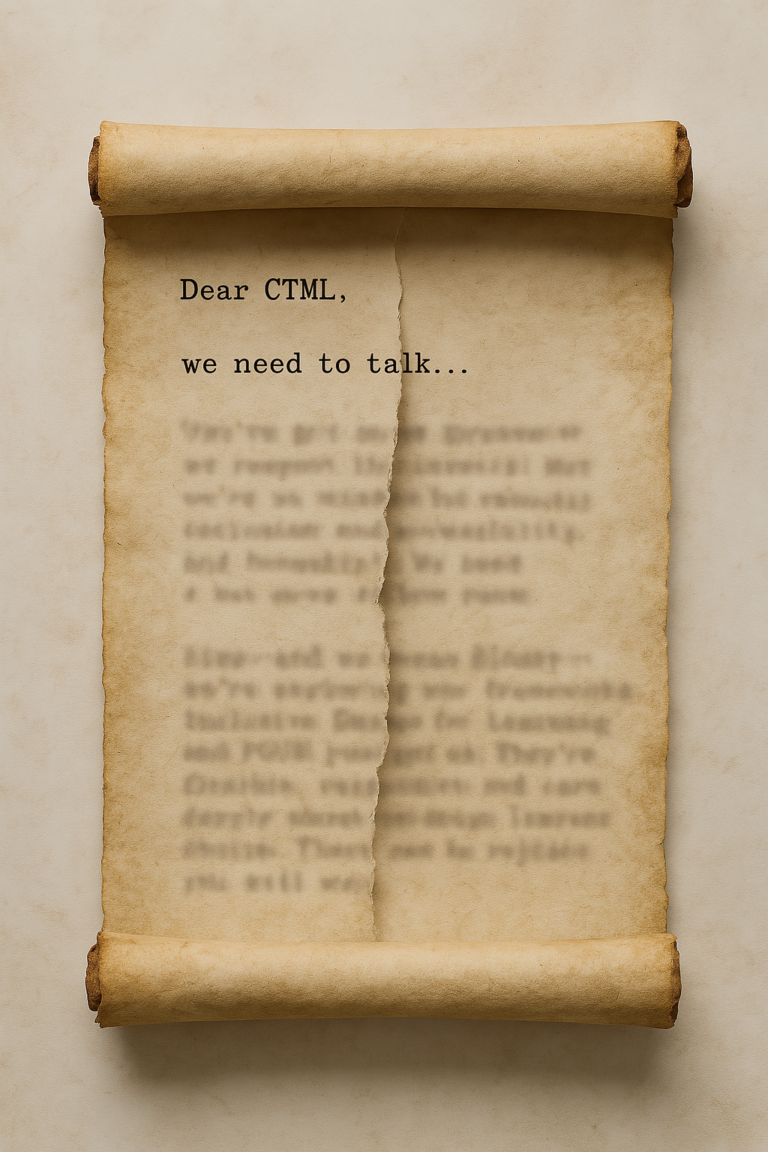The Journey to Multimedia IDEAs
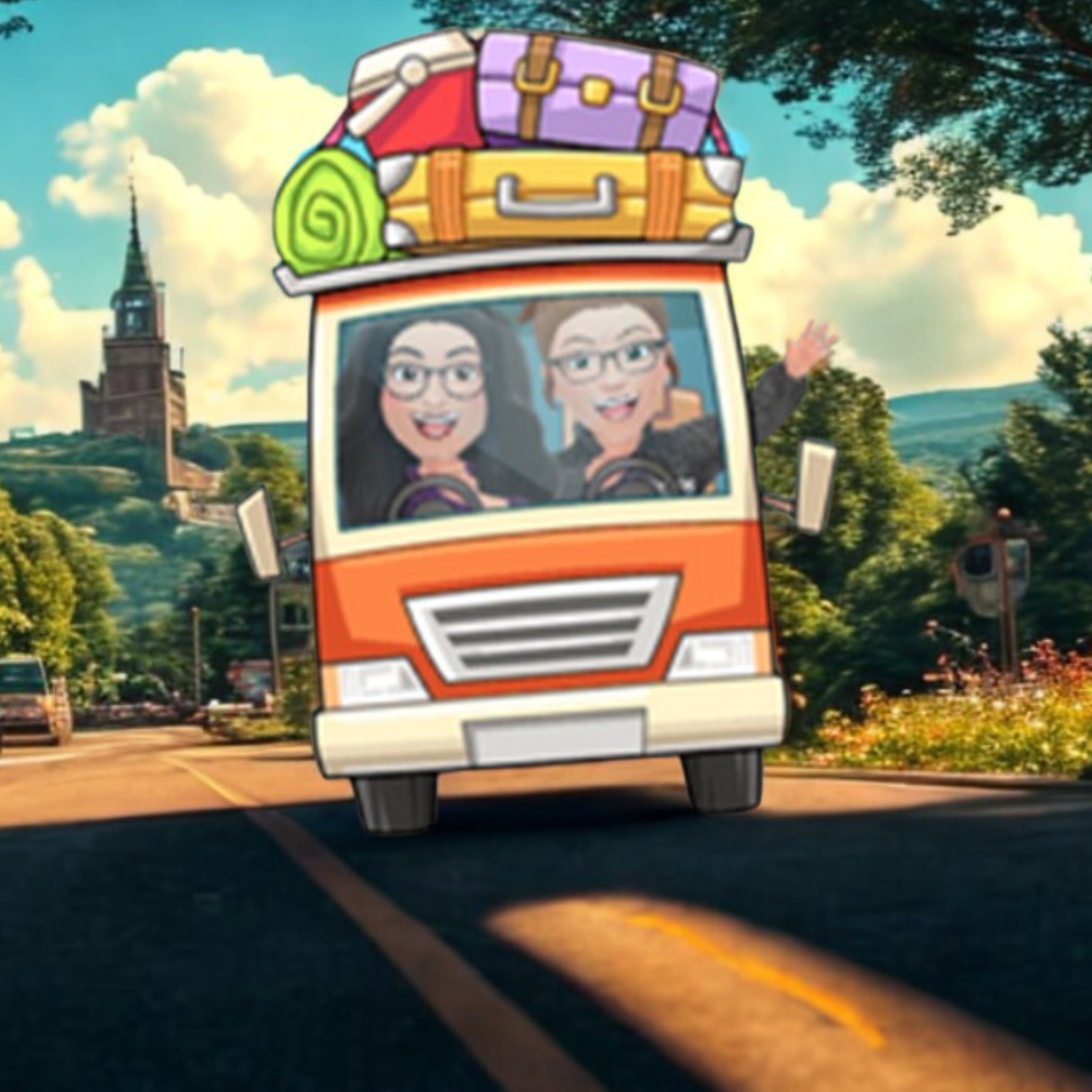
Featured image created in Bitmoji and edited in Canva
Written in partnership by Kati Dreilich and Tiffany Kearns
The Journey to Multimedia IDEAs
We’re going to take you on our journey towards making our Multimedia IDEAs website. We came up with the acronym IDEAs – inclusive digital educational activities – because of an inside joke involving excessive use of the word “idea”. We sure had a lot of ideas throughout creating this project, with twists and turns and bumps along the way. Get ready to join us as we follow the path we took as our ideas shifted and grew. Buckle up!
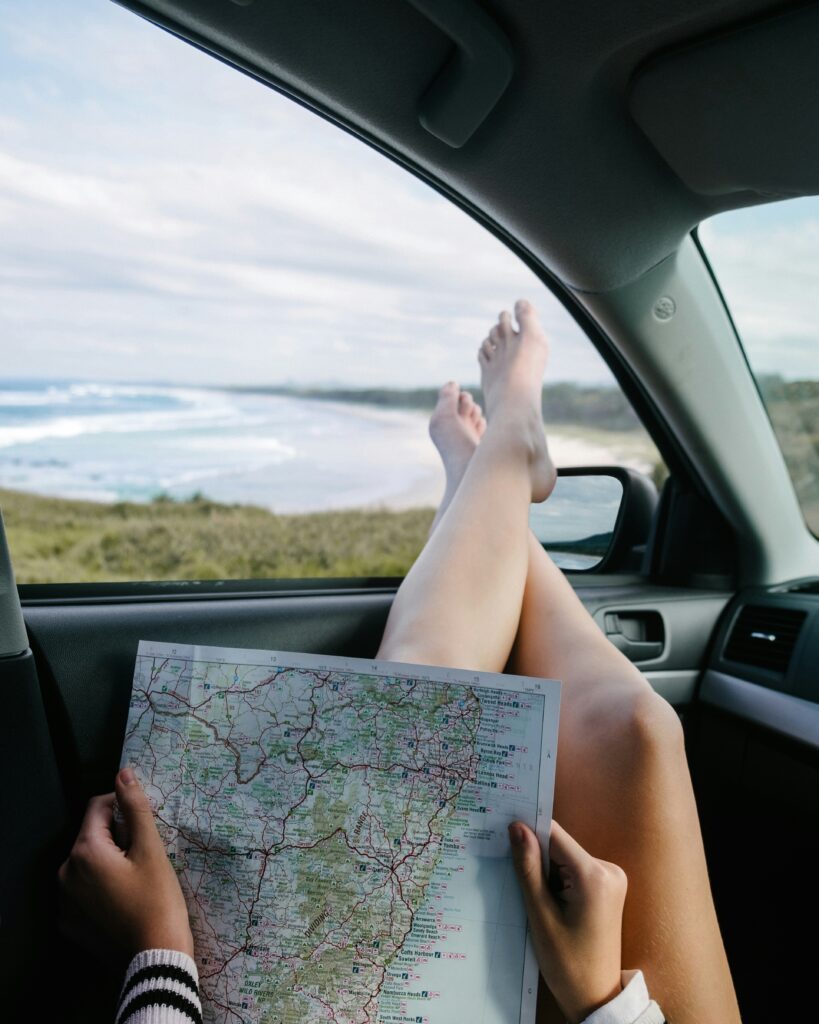
Plotting our Route – Written by Kati
I reached out to Tiffany in the fall of our second year of the program because I couldn’t settle on an idea for a topic for my project. I had lots of ideas floating around in my mind, but couldn’t come up with anything tangible. So, I thought that I would check with Tiffany, the other literacy teacher in the cohort, to see what she had in mind.

First Stops, Scenic Detours and Forks in the Road – Written by Tiffany
As our road trip continued in its early days, we originally thought we would work in parallel on different topics—photovoice and assistive technology. But our shared passion for student voice, sparked by our summer course EDCI 532 and readings from Ted Aoki, led us to refocus on using multimedia to amplify marginalized perspectives. This shift aligned beautifully with our discovery of Inclusive Design for Learning, which shaped our entire vision—mismatch, margins, co-designers, the virtuous tornado, and a one-size-fits-one approach. While the Cognitive Theory of Multimedia Learning (CTML) offered practical principles, its lack of flexibility nearly prompted us to abandon it altogether. Along the way, we hit exploratory pit stops: Twine, which intrigued us with its branching possibilities but couldn’t meet our needs, and the game-changing discovery of H5P. This platform unlocked our creativity, offering endless ways to make learning more interactive and accessible. To house our growing library of H5P content, we chose WordPress, drawn by its seamless integration and flexibility for inclusive design.

Diverse Landscapes – Written by Kati
Early on in our partnership, we recognized and valued the diversity of perspectives that each of us brought to the table, sparked by the diversity of our students. The initial title of our paper was Inclusive Multimedia Instruction for Diverse Learners. The term “diverse” featured heavily in our first draft of our topic/problem/purpose for Chapter 1 of our paper. However, one of the first pot-holes on our journey occurred when we met with one of our supervisors and she told us that “diverse” wasn’t the appropriate word to use in our paper! This sent us into a bit of a panic! Would we need to rethink our whole project? Why can’t we use the word diverse? What other word is there that’s better? After calming down and re-reading a few articles on inclusive design, we understood what our supervisor was saying. Diverse didn’t fully capture the needs of students who were experience a mismatch and being left out. That’s when we arrived at the term marginalized learners.

Following the Path to Literacy – Written by Kati
Literacy had always been what connected us, but we didn’t make it a focus until much later in our partnership. With all of our learning about multimedia and inclusive design, we put a lot of attention on the mismatch that exists for marginalized learners and the potential multimedia held in addressing educational disparity. But what were we actually going to do with this understanding? What was our purpose? That’s when we saw the path that had been in front of us this entire time – the pathway to literacy.

Discovering New Destinations – Written by Tiffany
Our exploration into multimodality marked a pivotal moment in our learning journey—charting new territory we hadn’t quite realized was right beneath our feet. While we had encountered multimodal approaches before, we didn’t yet have the language to describe them or recognize how significantly they’ve transformed traditional literacy, moving far beyond the confines of written text. Through our readings and research, we discovered that multimodal literacy isn’t a one-size-fits-all concept, and that different groups interpret and apply it in varied ways. Cultural, social, and educational contexts shape these approaches, offering us a richer, more inclusive perspective on how literacy is evolving.

Bumps in the Road – Written by Kati
Like any journey, we experienced some roadblocks along the way in the early design stages of our multimedia modules. I originally planned to teach reading strategies in my interactive book, as this is a major part of my literacy intervention role. However, the books that I use are copyrighted, and when I contacted the publisher, Nelson Canada, they redirected me to Cengage Australia, who never responded to my online form. Thinking back to what we learned about copyright, I decided, instead, to use literature in the public domain and shifted my focus towards my other idea of teaching punctuation.

As someone who enjoys traveling, I know that vacations can be expensive, but we weren’t expecting to experience financial roadblocks along our design journey. We both had a vision of what we wanted our videos to be like – full of fun, colour and animation. Unfortunately, all of the engaging and easy to use animated video-creation platforms that we found required a costly subscription or had a very limited free trial time period.

Another bump in the road that we encountered showed us that technology can change in a relatively short period of time. When it came time to set up our website, the Bitmojis that we had included in our course presentations didn’t look as cute as they used to. We tried everything to adjust them, but the facial features were over-exaggerated and some even looked like I had a bit of a beard! Then, to add onto my frustration, I discovered that the theme that I planned to use for our website, the same one as my master’s portfolio, had recently been retired. I guess some platforms travel at a higher speed than I expected.
Steep Learning Curves – Written by Tiffany
Steep learning curves defined much of our journey as we dove headfirst into the unfamiliar terrain of digital media creation. From mastering the ins and outs of PowerPoint—beyond basic slides to animated transitions, timed voiceovers, and caption integration—to wrangling the capabilities of H5P, we found ourselves constantly pivoting, troubleshooting, and growing. H5P introduced us to a whole new world of interactivity, and while its features were exciting, learning how to design accessible, engaging activities wasn’t as easy as it looked. Trial-and-error became the norm but we arrived at a growing appreciation for the robust power of multimedia in inclusive education.

Arriving at Our Home Base
Now, here we are! We have arrived at our destination: Multimedia IDeas – dot- open ed – dot -c a. Our website is up and our interactive books are published! We hope that teachers, students, and parents are able to use and take what they need from it. If they already know about exclamation points, they can move on to commas. If they already know the future tense with “will”, they can move on to future with “going to”. Teachers can look at the pre and post activity ideas, but if they already have activities they can skip to the videos and H5P interactive activities. In true inclusive design form, we have an email set up for feedback so that co-designers can share what works and doesn’t work for them.
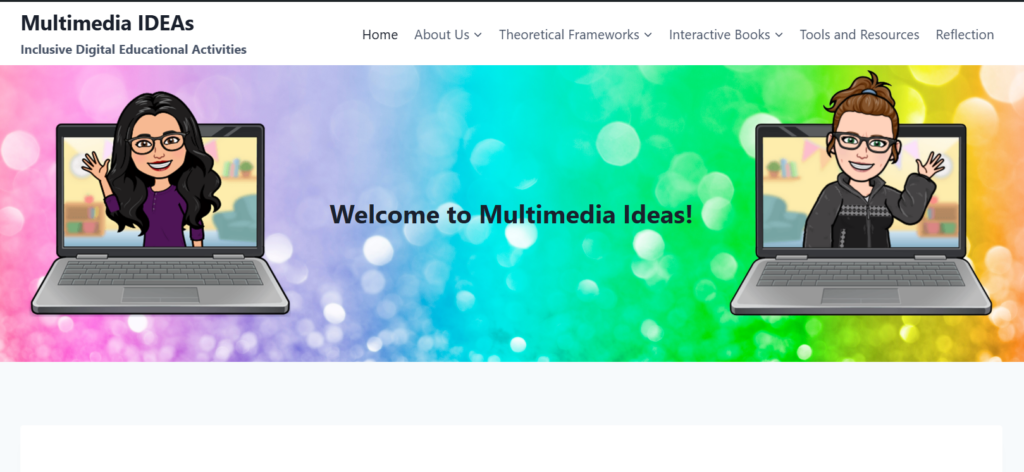
We also chose to include information on our theoretical frameworks, in hopes that others we feel encouraged to jump on board with CTML principles and inclusive design practices. What was originally planned as a holding area for H5P modules has blossomed into a robust OER of it’s own, showcasing our designs, our ideas and our learning.
The Road Ahead
But the journey doesn’t end here. While exploring our website you may see a ‘coming soon’ sign. This indicates that we still have more we want to create and share. We hope we have inspired others to take a similar journey.
And so, our story—sparked by curiosity, shaped by trial-and-error, and guided by co-design—continues to grow, because learning isn’t a destination…it’s a path we build as we walk it, in multiple modes, one inclusive step at a time.

The Journey to Multimedia IDEAs © 2025 by Kathini Dreilich and Tiffany Kearns is licensed under CC BY-NC-ND 4.0

